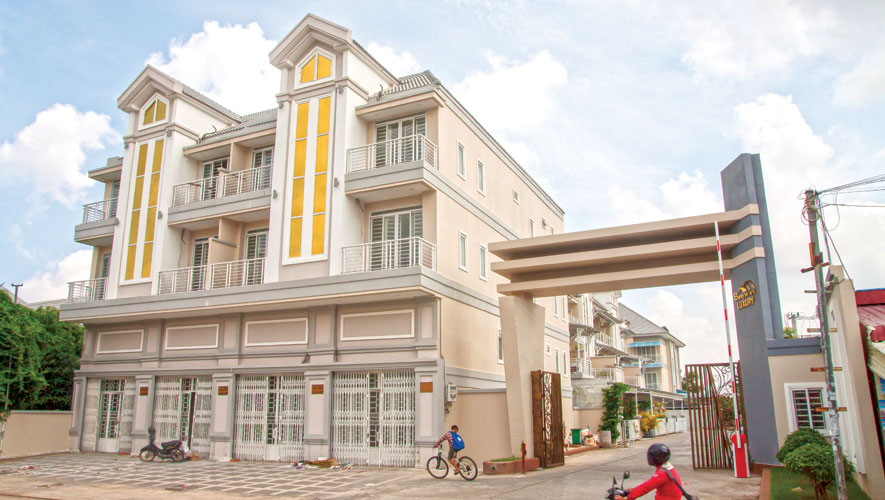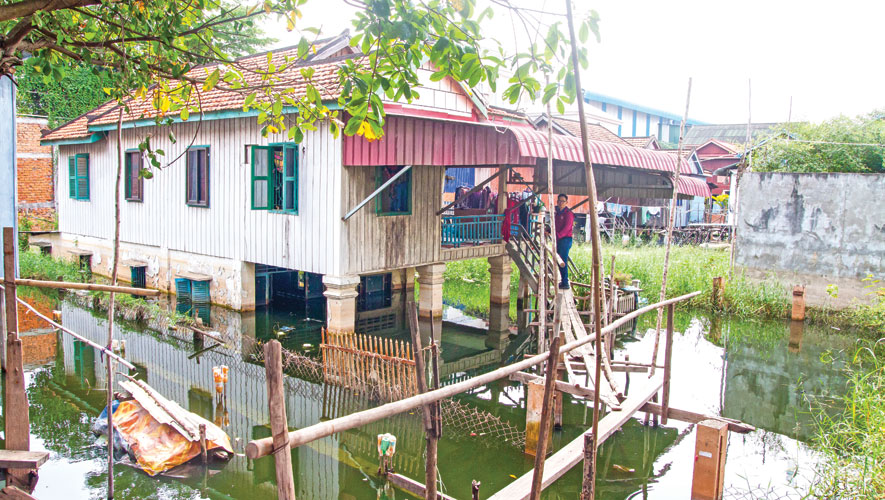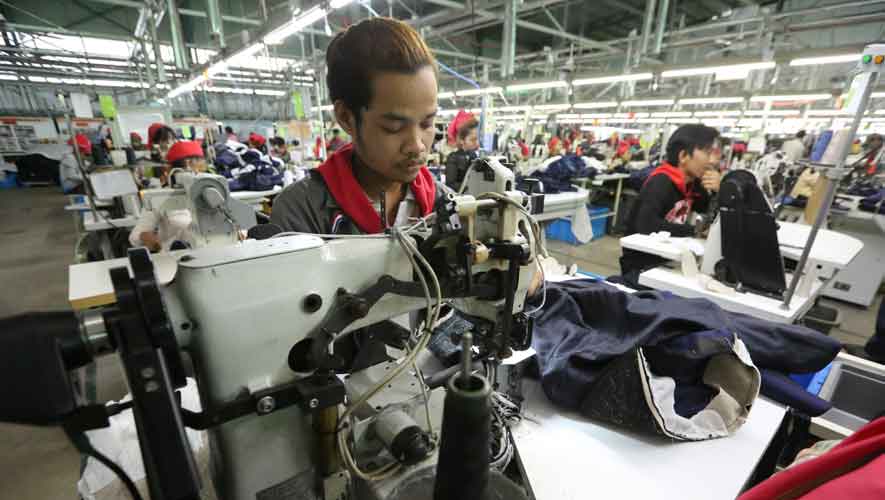Earlier this year, the nation and indeed the world watched in horror as the number killed continued to rise in Sihanoukville following the collapse of a construction site where workers died in their sleep.
For the latest Cambodian Business news, visit Khmer Times Business
This deservedly made international news but, across the nation, there are underreported consequences of Cambodia’s booming construction industry.
Over the last 18 years, the Ministry of Land Management, Urban Planning and Construction (MLMUPC) reportedly approved 43,136 construction projects nationwide, totalling investment capital worth an estimated $43.3 billion. The construction sector grew 18.1 percent in 2018, according to CBRE – the largest real estate provider in Cambodia.
The Kingdom is witnessing rapid changes. Sihanoukville has, in such a short space of time, become entirely unrecognisable through the sheer volume of foreign investment.
A sleepy coastal town has been torn asunder by a tsunami of Chinese money, sending the cost of living soaring in tandem with the city’s skyline. Urbanisation, when properly managed, provides great opportunity, but rarely is progress enjoyed equally. There have always been winners and losers as cities develop, but in Phnom Penh, where the green or blue netting that surrounds scaffolding can be seen almost across the entire city, it is predictably the poorest who are losing out.
Collateral victim
Caught between the arterial Route Nationale 1 and the Mekong River lies the district of Chbar Ampov.
Within this small patch of Phnom Penh is Russey Sros – a village in Niroth commune and a collateral victim of the city’s construction craze. Dusty roads weave around sun-bleached shops; the distance from the capital suddenly brings the divide between rich and poor into sharp focus. If the Cambodian capital’s wealth is supposed to trickle down, it has not made it as far as Chbar Ampov.
Swamped in just over 3 metres of water, locals who call Russey Sros home have been forced to abandon their ground floor. The wooden walkway that links their houses to the road is precariously homemade but a necessity for entering and exiting the affected area.
“I have lived here for 10 years,” explains one villager, who wished not to be named for fear of reprisals from both the property developers and the local authorities. “The flooding was natural. Often the rains would come and then the water would wash back into the river, but since 2012 the flood waters cannot get back. The Borey Hi-tech development has stopped our natural drainage,” she says.
Gulf between rich and poor
Constructed in the neighbouring village of Boung Chhuk, Borey Hi-tech is typical of the luxury complexes that are shooting up around the city. Spacious, plush and, most importantly, exclusive to those who can afford it.
Just last month, Capital Cambodia spoke to Chief Executive Officer of Khmer Real Estate Kim Heang, who claims that boreys – the gated communities such as Borey Hi-tech – will continue to dominate the market, despite predictions of the popularity of condominiums.
By 2020, boreys will make up around 60 percent of the residential market share, but this is set to decrease to between 50 and 55 percent come 2021 and down to 50 percent from 2022 as the demand for condominiums is expected to rise.
With 40 units of queen villas – each worth $1.3 million – along with a host of twin villas valued at $720,000 and flats worth $270,000, there is little chance any of the villagers whose homes have been flooded will be taking up residence in Borey Hi-tech.
Even if they could afford it, of the 40 queen villas, only two remain on the market – the other 38 having already been sold, allegedly to Khmer buyers. Just four of the $270,000 flats are still available. As the Borey Hi-tech sales rep laughs, “We only have one twin villa left – the mock-up house.”
Doubtless, the villagers in Russey Sros are not laughing.
“All of the villagers – there were around 10 families here – we reported the flooding to the local authorities, but they do nothing,” says the villager, who says she suspects the local authorities have been bribed. Four families have already left, she says, but for many there is no opportunity to leave.
Nobody wants to buy
“Of course we want to leave, to get out, but nobody wants to buy this land. This year the water reached chest height. It was inches from my floor,” she says, motioning at the wooden slats she is sat on and the murky water below.
The villager explains she initially wanted $500 per square metre of land but, now, with little more than a small shack that remains permanently submerged half underwater, she cannot even find a buyer. The affected area, she tells us, is approximately 9m by 22m, but she is unaware of how much of the land is hers, nor whether there is any effective means of measuring to find out, given the floodwaters.
As such, she lives here with her 17-year-old daughter and can do nothing but watch from the stifling confines of the first floor as the floodwater stagnates.
“My condition is ok now,” says the 49-year-old resident. “But the difficulty comes when there is a problem with my health. It’s very difficult to reach the road, especially at night, and we don’t know what’s in the water: bacteria, snakes – we just don’t know,” she says, exasperated by the way she now has to live, while just across from her some of Cambodia’s wealthiest enjoy the suburban comforts that have hemmed her in with the floodwaters.
Flooding the market
Despite CBRE’s warnings of oversaturation in the luxury accommodation market, their 2019 Real Estate Market Outlook states that Cambodia will see “120 percent growth in total supply year-on-year. The biggest change is expected in the high-end segment with an estimated increase of 243 percent year-on-year, followed by the affordable and mid-range sectors at 100 percent and 78 percent, respectively.”
Realestate.com.kh – one of the leading property portals in the Kingdom – notes that Chbar Ampov’s distance from the city centre is one of the key reasons that it hasn’t seen dramatic rises in the price of land, especially when compared with more popular districts such as Daun Penh and Chamkarmon.
However, the Borey Hi-tech properties listed on Realestate.com.kh go out of their way to promote the villas as “Non-flooding” – which seems unfortunate given the state of Phum Russey Sros.
Tep Promney, the commune chief for Niroth, claims that the flooding was much worse previously and that 70 percent of the 100 families affected have now been assisted, although she remained unclear exactly how other residents had been helped.
She remains adamant that Borey Hi-tech is not responsible for dealing with the floodwaters, but noted that Borey built its expansive luxury villa complex on land that they raised higher than the village, preventing the water from affecting them.
Plans for drainage system
She did go on to say that by early 2020, a 1.5m wide drainage system will be installed, but Tep couldn’t give an estimated date or confirm whether or not the district authority’s budget will allow for this.
Reaching out to Borey Hi-tech proved fruitless, with the luxury villa developers refusing to answer questions on the matter.
One employee familiar with the project in Niroth commune, Srong Kimhong, said he had not personally seen any flooding, but conceded he had been working on the project for less than a year.

No resolution in sight
The web of bureaucracy that entangles local government saw a range of figures attempt to pass the buck. Cheng Monyra, district governor of Chbar Ampov, said he hadn’t heard of any issues related to flooding, but promised to send a deputy to investigate.
Meanwhile Phnom Penh City Hall spokesperson Met Measpheakdey claims that he was unaware of the situation, but explains that all investments must include an Environmental Impact Assessment (EIA) and that this must include the impact on the surrounding area.
Neth Pheaktra, spokesperson for the Ministry of Environment, notes that Borey Hi-tech have many projects, but couldn’t confirm whether or not the developers had ensured an EIA had been carried out or whether their project was compliant with the findings of an EIA had it been done. He did, however, go on to say that if there is a problem, the villagers are free to lodge a formal complaint.
“Once we receive the complaint, we can take action accordingly,” he says.
The villager remembers that in 2018, the local governor and representatives from Borey Hi-tech had planned to build a drainage system, but that the people living along the road nearby had objected.
Constructing the system would mean widening the road – a task that would claim their houses.
Their demands for compensation went unmet and so the drainage system was never finished.
“I have no idea if negotiations will continue,” she says, claiming the decision not to build was unfair beacuse it left her house submerged and seemingly worthless.
Coping with growth
Her story remains unresolved, which in itself is not unique for Phnom Penh, where many communities remain displaced, unable to keep up with the rampant property development. Earlier this year, the French-based international news media group AFP reported a community of roughly 130 families – or some 500 people – inhabiting the cemetery at Smor San.
Priced out of their own neighbourhoods or victims of housing collapses along the Bassac riverbanks, the residents of Smor San were reported to have been living among the dead for years. For most, it was the only place within their budget.
As the preliminary findings of the 2019 census show, Phnom Penh’s economic opportunities draw a crowd. “It attracts migration from other provinces, promising employment and growth in the garment, construction, tourism and educational sectors,” says the report, noting that Phnom Penh is the second smallest province – with just 679 square kilometres – but has a disproportionately high population density of 3,136 people per square kilometre.
Inhabitant set to increase
This is up from 2,212 per square kilometres in 2008, placing the capital in the top-five growing provinces by population. Clearly the problem of finding suitable housing for the growing number of inhabitants of the city is only set to intensify.
The MLMUPC predicts that from 2015 to 2030, the demand for affordable housing in Phnom Penh will rise to 800,000 out of the 1.1 million needed nationally. This, the ministry says, would require Cambodia to build 50,000 units per year to meet demand – a demand that looks unlikely to be met.
The need for both affordable housing and responsible urban management becomes ever more apparent in the face of cases like these, but the boom and bust nature of construction has rapidly transformed the skyline of Phnom Penh and, so long as the foreign direct investment keeps on flowing, the human cost of property development will keep on growing.




